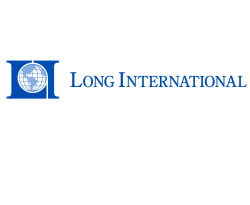1. INTRODUCTION
Contractor's claim submittals and expert reports are often deficient in proving causation, i.e., the
cause-effect linkage. These claims generally outline the owner-caused impacts and separately
calculate quantum; however, the two are often not linked in any meaningful way. Most claims are
settled prior to a decision by a panel, court, or board, and therefore these deficiencies are not made
apparent. Yet, a well-prepared claim document which includes a persuasive and accurate causeeffect
analysis can greatly improve the contractor's chances of a successful recovery, either
through negotiations or in arbitration/litigation. This analysis is difficult and often costly to
prepare, and is therefore not performed in many disputes, which may be the reason why the
claims fail.
For the analyst seeking to show the cause-effect linkage in a cumulative impact of changes claim,
the task is even more difficult. By an earlier definition, cumulative impact is "exclusive of that
local disruption that can be ascribed to a specific change," 1 or stated another way, cumulative
impact cannot be ascribed to a specific change. Yet court and board decisions have shown that
simply demonstrating that numerous changes existed, and that the contractor suffered a loss of
productivity, is often not sufficient for recovery. This dichotomy is difficult to overcome.
In Luria Bros. & Co. v. United States, the court stated: "It is a rare case where loss of productivity
can be proven by books and records; almost always it has to be proven by the opinion of expert
witnesses." 2 Proving causation in direct disruption or cumulative disruption claims most often
requires a qualified expert, as well as detailed and complete contemporaneous project
documentation. The following suggestions, while case sensitive and highly dependent on the
detail in the project record, provide several ideas on linking excessive changes with a loss
of productivity:
- Prepare a schedule analysis (see Section 2);
- Track the impact on an activity or crew (see Section 3);
- Show how the site environment changed from plan (see Section 4);
- Tell the factual story with graphics (see Section 5); and
- Prepare a cause-effect matrix (see Section 6).
This article is a slightly modified chapter from the book, Cumulative Impact and Other Disruption
Claims in Construction, published in 2014.
2. SCHEDULE ANALYSES
Contractors often utilize a schedule analysis to identify and help quantify the effects of ownercaused
changes and impacts that delayed their work. As a result of project delay, the contractor
may accelerate, increase its manpower, work excessive overtime, experience trade stacking and
crowded conditions, and allege compensable loss of labor productivity. However, without support
from a schedule analysis, the contractor makes a quantum leap from proving the owner-caused
delays and impacts, to alleging that 100 percent of the productivity loss is compensable due solely
to the owner-caused delays and impacts.
The contractor's own problems may have contributed to the productivity loss and must be
considered. A more appropriate analysis of the increased labor costs would be to allocate the labor
cost increases to both the owner and the contractor according to their respective share of delays,
disruptions, and problems.
Contractors are not legally bound to demonstrate delayed performance or project delay to recover
for loss of productivity.3 However, the relationship between delay and productivity is evident. If a
contractor is delayed, it may have to recover that delay through acceleration measures, at the
expense of productivity. Likewise, if a contractor suffers poor productivity, it may lead to
schedule delay.
When courts and boards are considering causation in respect of disruption claims, the proof of
delay, or lack thereof, is at least one consideration. In Charles G. Williams Construction, the board
found that the contractor had proven it was delayed unreasonably by the government's actions, and
therefore the contractor was entitled to damages for both extended overhead and disruption.4 In
discussing proof of causation in J. A. Jones, the board emphasized that the contractor had not
proven it was delayed as a result of compensable issues, which was one basis for its denying the
contractor's cumulative impact claim.5 In Advanced Engineering & Planning Corp., the board, in
denying the contractor's disruption claim for lack of causation, cited the contractor's failure to use
a resource-loaded CPM schedule as required by contract:
"In this connection, we have found, had it submitted and updated a "resource
loaded" CPM as required by Standard Item No. 009-60, AEPCO could have
tracked disruptive impact through the schedule..." 6
Based upon the above, it is evident that a schedule analysis can be helpful in demonstrating
causation. Even if a formal schedule analysis is not prepared, bar charts, histograms, and other
data sourced from the project schedule can be useful in demonstrating causation. Several examples
of this are provided in this chapter.
3. TRACKING IMPACTS BY ACTIVITY OR CREW
. . .Continue to read rest of article (PDF).











